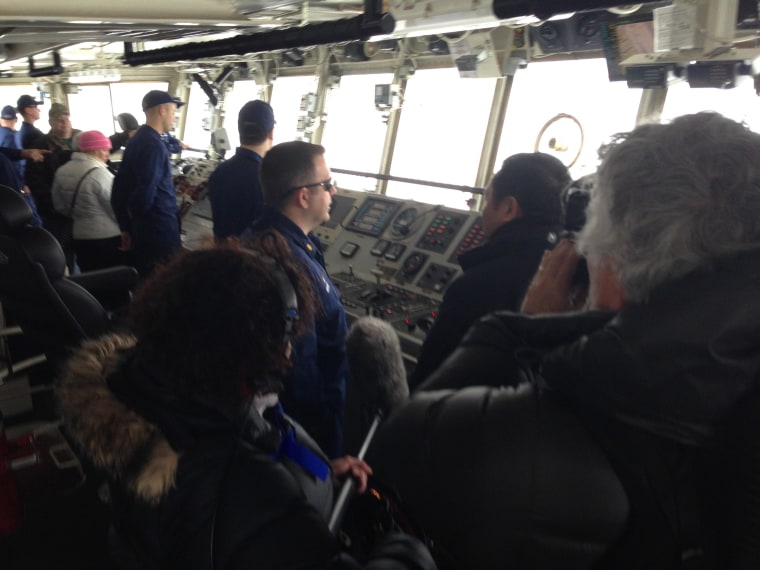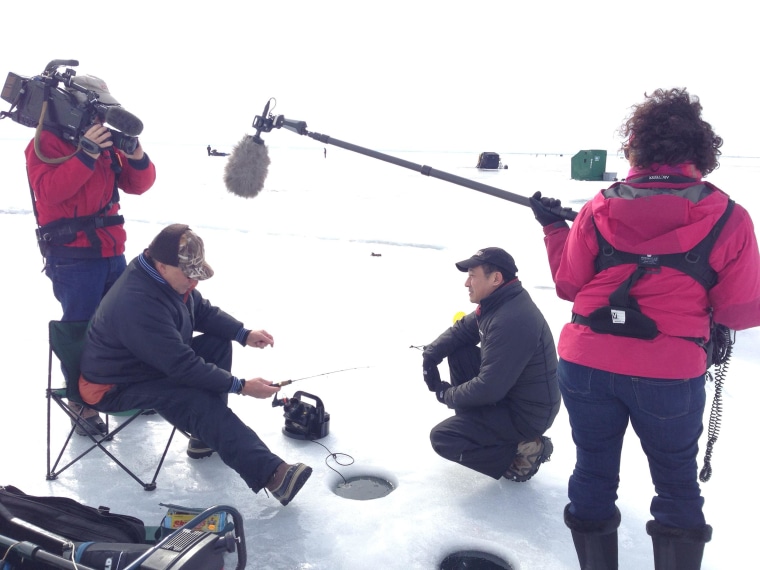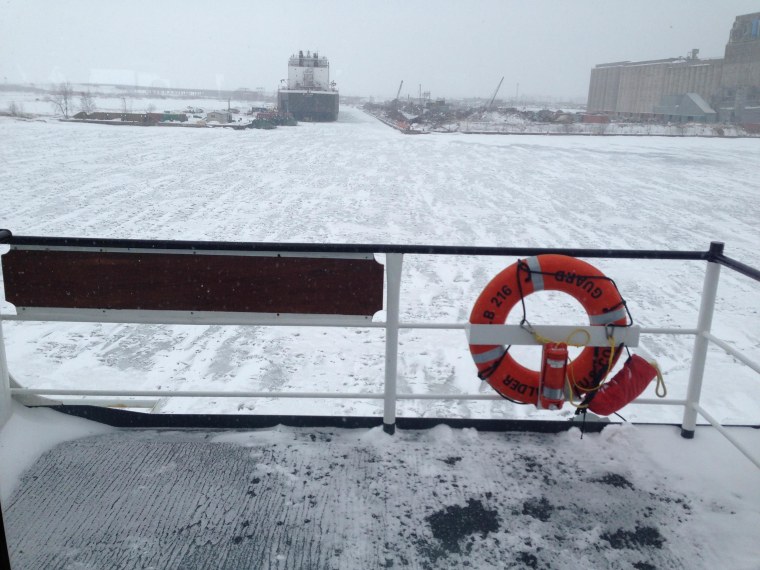ON LAKE SUPERIOR—Being on a Coast Guard cutter on an ice-breaking mission is an experience for all the senses.
As the U.S. Coast Guard Cutter Alder made its way through the Duluth, Minn., harbor—which has been covered with ice since December—there was a constant low rumble as the reinforced hull crushed huge plates of ice into smaller chunks, punctuated by loud cracks as fissures spread outward through the ice.
“It rattles everything. Bolts come loose, pipes break, pipes freeze, ice gets clogged in the filters.”
On deck, the temperatures were in the single digits, while the wind topped 25 knots. Along the side of the vessel, slabs of broken ice flipped up on their edges before plunging back into the water. The 295-foot cutter shuddered and lurched as it pushed through ice as thick as four feet.

“You feel the ship shaking right now?” asked Lt. Cmdr. Anthony Maffia, who commands the Alder’s 50-person crew. “It rattles everything. Bolts come loose, pipes break, pipes freeze, ice gets clogged in the filters.”
This winter has been especially hard. The ice set in in December—the second-earliest date on record. The shipping season on Lake Superior began its winter break on Jan. 15, when the Soo Locks at Sault Ste. Marie, Mich., closed. Huge 1,000-foot ore carriers have been literally frozen in place since then.
“It’s like spring training.”
The Alder began breaking ice in advance of the Soo Locks’ reopening on March 25, the official start of the shipping season.
“We’re trying to do a little preemptive work in preparation,” Maffia said. “It’s like spring training.”
The Alder is one of nine Coast Guard icebreakers on the Great Lakes.
“Without the icebreakers making the ports ready for commerce, it wouldn’t move until the ice is essentially gone,” said Maffia. In the last heavy ice year, 1994, there was still ice in Duluth’s harbor in early June, according to researchers at the University of Minnesota-Duluth.
On this particular day, the Alder spent four hours breaking a track through the ice from the harbor to open water, a distance of about 5.5 nautical miles, then doubling back to break up ice in the basin where ships turn from the iron ore, coal and grain terminals to head out into the lake.
The ship’s bow drove onto the ice, crushing it under the vessel’s weight. To add to that weight, three 16,000-pound concrete blocks—anchors for the navigational buoys the Alder and its crew maintain during warmer weather—were chained on its deck.
The Alder, with its 6,200 horsepower, maintained a steady speed of about 5 knots an hour. Maffia estimated that meant the ice was about three or four feet thick.
Thicker ice can actually slow the ship to a stop. When speed drops below 1.5 knots, the ship backs up to get a running start and ram the ice.
The Great Lakes dominate the region’s culture, economy and climate. Scientists say the effects of the ice will likely be felt into summer in cooler temperatures.
"It’s going to be—I hate to say it—a lousy year for swimming in here until about August.”
“It’s going to be at least mid-August before we start seeing warmer water form out in the middle of Lake Superior”—something that normally happens in early July, said Jay Austin of the University of Minnesota-Duluth’s Large Lakes Observatory. “At that stage, of course, you’re only about a month outside of when it’s going to start to cool off again. …. It’s going to be—I hate to say it—a lousy year for swimming in here until about August.”
The National Oceanic and Atmospheric Administration and the U.S. Army Corps of Engineers have also forecast that Great Lakes water levels will be closer to the average over the next six months, after last year’s record lows in Lake Michigan and Lake Huron.

For now, the ice is a late-season bonus for ice fisherman. On a recent morning, the ice off Duluth’s Brighton Beach was dotted with more than two dozen anglers. Many acknowledged they weren’t even supposed to be there—they’d called in sick at work.
One of them, Dave Maki, was happy to talk.
“I’m retired, so I don’t even know what day it is,” he said with a laugh.
Five years ago, he said, he was in the same spot on about the same date—in a boat. On this day, he had no fish to show for his efforts.
“Could care less,” he said. “Fish is a bonus right now."
Maki added, "After all that 40- and 30-below zero, it’s kinda nice to come out here and breathe all over again, you know. Spring’s a-comin’.”
And for many, not a moment too soon.
